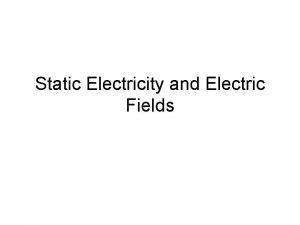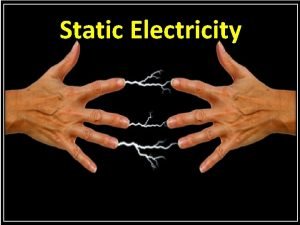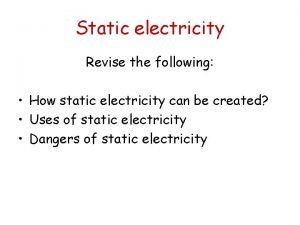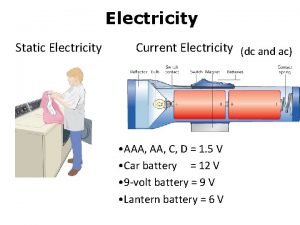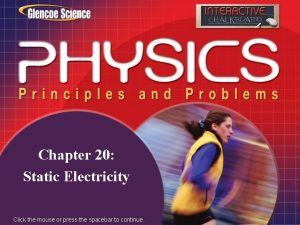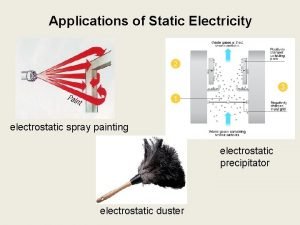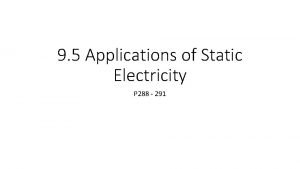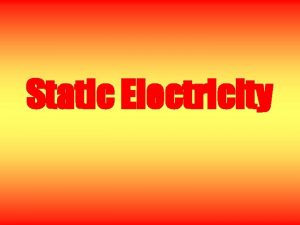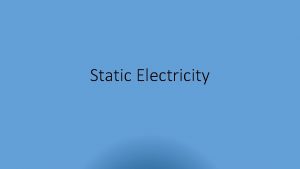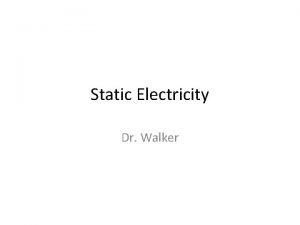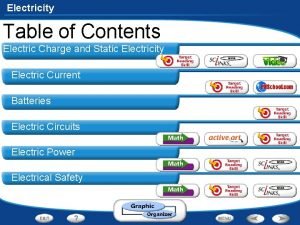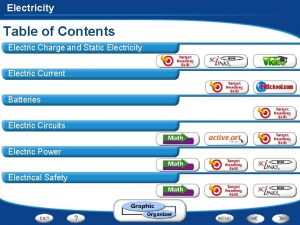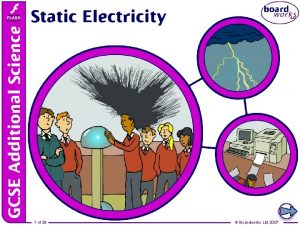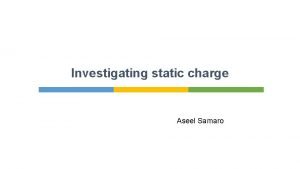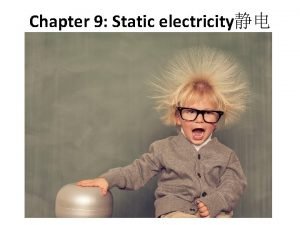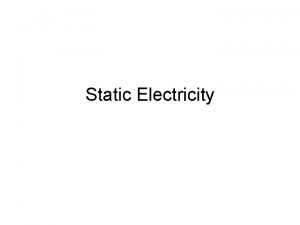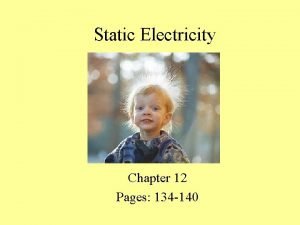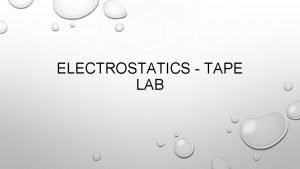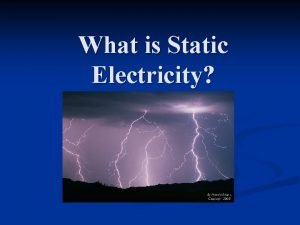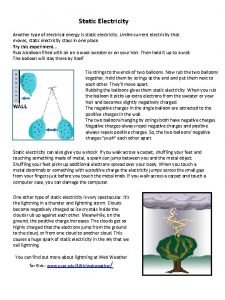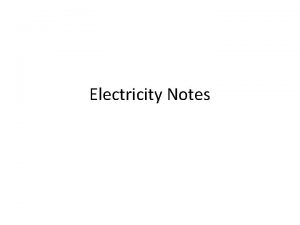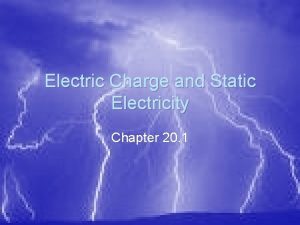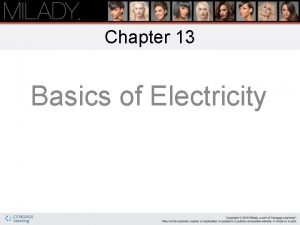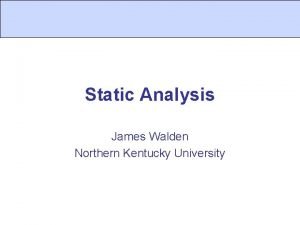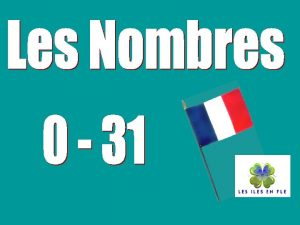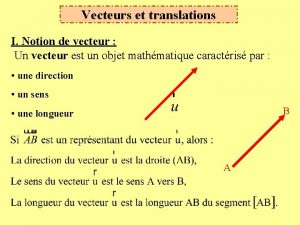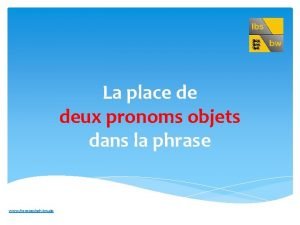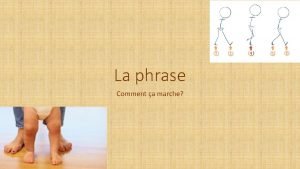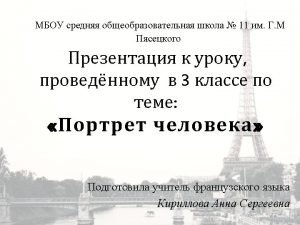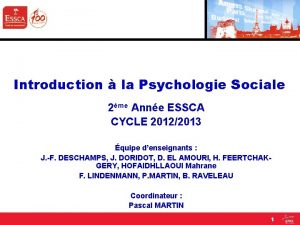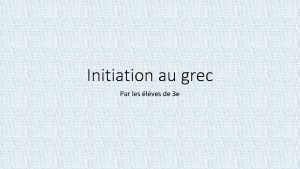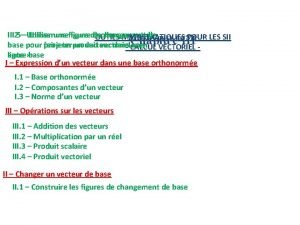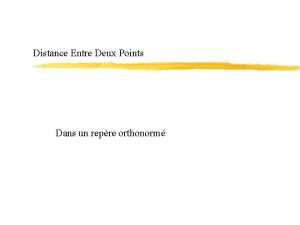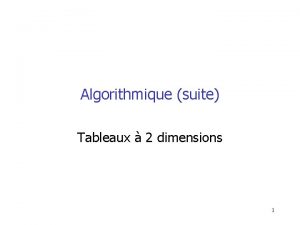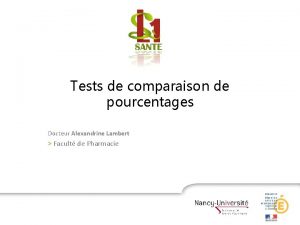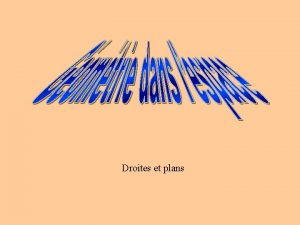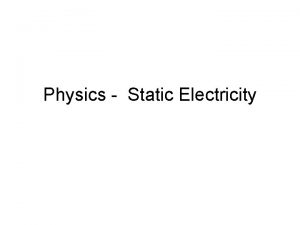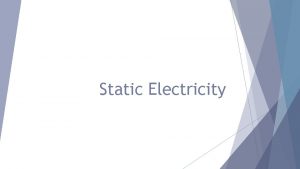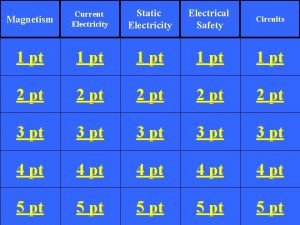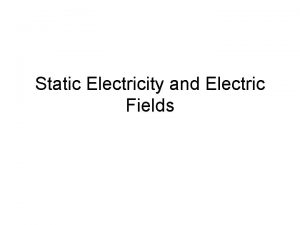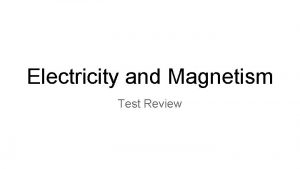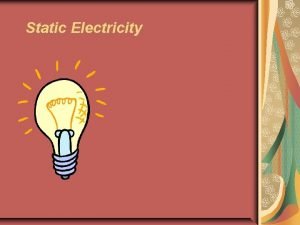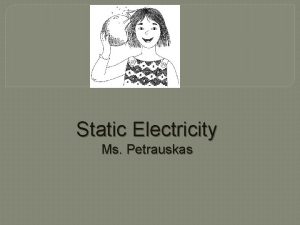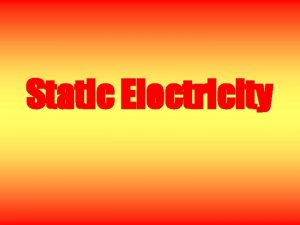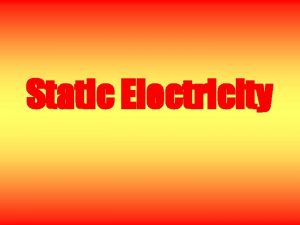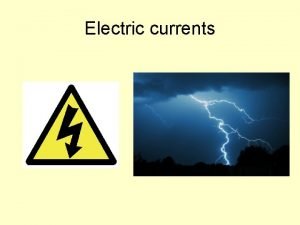Electricity Review Static Electricity Circuits Part Deux Safety




















































- Slides: 52

Electricity Review

Static Electricity Circuits Part Deux Safety In the House 10 10 10 20 20 20 30 30 30 40 40 40 50 50 50

Question 1 - 10 • What is electricity

Answer 1 – 10 • Electricity is the set of physical phenomena associated with the presence and flow of electric charge.

Question 1 - 20 • If you rub plastic and fur together what will happen, with respect to charge, to each of those substances?

Answer 1 – 20 • Fur will loose electrons and become positively charged and plastic will gain electrons and become negatively charged.

Question 1 - 30 • What is conductivity and how does an insulator differ from a conductor? – Be sure to include an example of the conductor and the insulator.

Answer 1 – 30 • Conductivity – ability of materials to allow electrons to move freely in them – Insulator – solid, liquid or gas resisting flow of electrons – Conductor – solid, liquid or gas allowing flow of electrons

Question 1 - 40 • If you were to bring a negatively charged balloon close to a wall. Explain, using two laws, what will happen to the charges in the wall.

Answer 1 – 40 • Negative will move inward, positive will remain to hold balloon • Law of Attraction and Repulsion – Opposites attract – Like charges repel

Question 1 - 50 • What is an electroscope and how does it demonstrate induction?

Answer 1 – 50 • Electroscope – detects static charge • Induction – movement of electrons within a substance caused by a nearby charged object, without direct contact between the substance and the object.

Question 2 - 10 • Draw and name three symbols from a schematic circuit diagram.

Answer 2 – 10

Question 2 - 20 • What is an electrochemical cell? – How does an electrolyte differ from an electrode in an electrochemical cell?

Answer 2 – 20 • A battery is a combination of electrochemical cells – Electrochemical cells are packages of chemicals that convert chemical energy into electrical energy – Electrolyte – liquid or paste that conducts electricity because it contains chemicals that form ions. – Electrodes – metal strips that react with the electrolyte – Chemical reaction allows electrons to collect on one of the electrodes making it negatively charged.

Question 2 - 30 • Draw a schematic diagram for a circuit with a 9 V battery, two equal resistors, a switch an ammeter and a voltmeter measuring current across one of the resistors indicating what the voltage would be.

Answer 2 – 30 • Diagram

Question 2 - 40 • How does a wet cell differ from a dry cell? Be sure to include examples.

Answer 2 – 40 • Dry cell – uses a paste electrolyte • Wet cell – uses a liquid electrolyte

Question 2 - 50 • Please define current, voltage and resistance.

Answer 2 – 50 • The difference in electrical potential energy between two points in a circuit is called the potential difference • Electric Current is a measure of the amount of electric charge that passes a point in an electric circuit each second. • Degree to which a substance opposes flow of electric current through it. – This resistance slows down the flow of electrons and therefore it slows down the current and converts electrical energy into other forms of energy

Question 3 - 10 • How does a series circuit differ from a parallel circuit?

Answer 3 – 10 • Parallel - Components are arranged so that electrons can flow along more than one path – A break does not affect all loads • Components are arranged one after another in series – One light goes out, they all go out – Add more resistance and you decrease the current

Question 3 - 20 • Draw a parallel circuit with a 9 V battery, three resistors each with its own switch, an ammeter measuring current out of the second resistor and a voltmeter measuring the voltage across the third resistor.

Answer 3 – 20 • Drawing

Question 3 - 30 • What is Ohm’s Law

Answer 3 – 30 • As long as temperature stays the same, V=IR

Question 3 - 40 • A current of 2. 3 A flows through a 50 ohm resistor that is connect to a battery. What is the voltage of the battery?

Answer 3 – 40 • 115 V

Question 3 - 50 • A current of 675 m. A runs through a resistor that is connected to a 120 V power supply. What is the resistance of the bulb?

Answer 3 – 50 • 177. 78 ohms

Question 4 - 10 • What is a short circuit?

Answer 4 – 10 • Accidental low resistance connection between two points in a circuit, causing excess current flow. • Electrical devices will not work and will be dangerous – heat or fire.

Question 4 - 20 • Compare and contrast fuses and circuit breakers.

Answer 4 – 20 • Fuse = safety device in an electrical circuit that has a low melting point, compared to wires. • Circuit breaker = does the same thing but instead of melting, the wire heats up and bends which triggers a spring mechanism to turn off the electricity

Question 4 - 30 • Identify two electrical safety devices involved with plugging in an appliance. – Think plug and appliance – Explain how they work.

Answer 4 – 30

Question 4 - 40 • Why must you avoid frayed electrical cords.

Answer 4 – 40 • Electric Shock…short circuit.

Question 4 - 50 • You want to find the value of an unknown resistor however you have access to a multimeter. • How could you figure it out?

Answer 4 – 50 • R = V/I • Use the ohmmeter function

Question 5 - 10 • What does time of use (TOU) electricity billing mean?

Answer 5 – 10 • Smart meters send usage of electricity on a house by house basis to the electric company so that the house gets charged the right amount

Question 5 - 20 • If a kettle uses 1. 5 k. W per hour and you have it on for 15 minutes every day, how much does your energy cost per year. – Assume energy costs you $0. 105/hour.

Answer 5 – 20 • $14. 37

Question 5 - 30 • What is the percent efficiency of a bulb that has 1000 joules of energy going in but only 600 joules of energy coming out?

Answer 5 – 30 • 600/1000 x 100 = 60% efficient

Question 5 - 40 • How does Energuide differ from Enerstar?

Answer 5 – 40 • Energuide – average energy use in a month or year for an appliance compared to other similar appliances. • Energy Star – means the appliance is one of the most efficient appliances in its class.

Question 5 - 50 • What are 5 things you can do at home to reduce energy consumption, or at least reduce the cost of your energy bill.

Answer 5 – 50 • OPEN
 Static electricity and current electricity
Static electricity and current electricity Electricity n
Electricity n How are static electricity and current electricity alike
How are static electricity and current electricity alike Static electricity review
Static electricity review Series parallel circuit current
Series parallel circuit current Roger trinquier
Roger trinquier Chapter review motion part a vocabulary review answer key
Chapter review motion part a vocabulary review answer key What is static electricity
What is static electricity Static electricity spray
Static electricity spray Bill nye series and parallel circuits
Bill nye series and parallel circuits Electrons electricity
Electrons electricity Current unit
Current unit Difference between charge and electric charge
Difference between charge and electric charge Static electricity chapter 20 answers
Static electricity chapter 20 answers Spray painting static electricity
Spray painting static electricity Static electricity painting
Static electricity painting Stationary electric charge
Stationary electric charge Static electricity examples
Static electricity examples Which is greater
Which is greater Graphic organizer electric current
Graphic organizer electric current Electric current graphic organizer
Electric current graphic organizer 2007
2007 Does magnetic field exerts force on a static charge
Does magnetic field exerts force on a static charge Static electricity
Static electricity Static electricity
Static electricity Electricity
Electricity Electrostatics sticky tape lab answers
Electrostatics sticky tape lab answers Is cotton negatively charged
Is cotton negatively charged Static electricity one cloud to another
Static electricity one cloud to another Types of charges
Types of charges Electric charge is
Electric charge is Static electricity by calamityofcolors
Static electricity by calamityofcolors Concept map
Concept map Chapter 13 basics of electricity
Chapter 13 basics of electricity Static type safety
Static type safety Static review
Static review Un deux trois quatre cinq six sept huit neuf
Un deux trois quatre cinq six sept huit neuf Vecteur et translation
Vecteur et translation Pronom objet direct et indirect übungen
Pronom objet direct et indirect übungen La phrase à deux pattes
La phrase à deux pattes J'ai deux pieds pour marcher
J'ai deux pieds pour marcher Théorie des deux facteurs de herzberg
Théorie des deux facteurs de herzberg Sceptre à deux fourches
Sceptre à deux fourches Figure de changement de base si
Figure de changement de base si Distance entre deux points dans un repère orthonormé
Distance entre deux points dans un repère orthonormé Relation de chasles
Relation de chasles Les tableaux a deux dimension en algorithme
Les tableaux a deux dimension en algorithme A moi comte deux mots
A moi comte deux mots Quelles sont les deux phases de la bataille de verdun
Quelles sont les deux phases de la bataille de verdun Histoire de deux amis
Histoire de deux amis Comparer des pourcentages
Comparer des pourcentages Infinitif ou subjonctif reliez les deux sequences
Infinitif ou subjonctif reliez les deux sequences Deux plans perpendiculaires
Deux plans perpendiculaires



